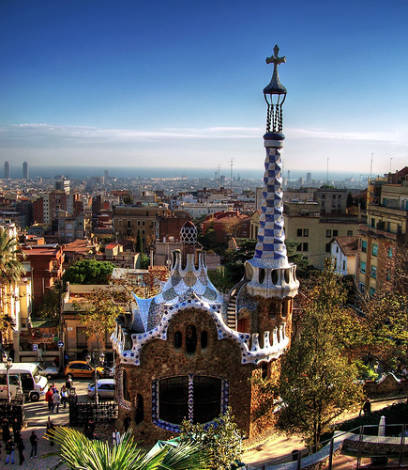BARCELONA, SPAIN. In the short amount of time I have been living in Spain, I have come to know one thing above all: Spain has many gems. From Granada to San Sebastian, from Extremadura to Valencia, and from Madrid to Barcelona, Spain is full of cities rich in more than just history and more than simply Spanish culture. Each city possesses something unique, something that separates it from the rest, and finding out what this something is, is reason enough to visit as many places as possible within this fine country. Needless to say, my weeklong escapade to Spain’s second largest city was no different.

Barcelona | Colton Helms
Going to Barcelona, I expected a few things: A beach, a different language, and an exhilarating nightlife. While I discovered each of these rather quickly, these examples merely scratch the surface of what this fine Mediterranean city has to offer. Starting with the sites, this city is known for its unique architectural work by Antoni Gaudí in the late 19th-early 20th century. If you do not know much about Gaudí, you will soon be educated upon entering the city of Barcelona. He has four cannot-miss works in this wonderful city, the Casa Milá (“La Pedrera”), Casa Battló, La Sagrada Familia, and The Park Güell. Although one must pay to enter each of them, one can view each of these precious landmarks from the outside. However, the price of admission is certainly worth it because what lies inside will leave you breathless.
The Park Güell costs 8 euros to enter, “La Pedrera” costs around 14 euros, La Sagrada Familia costs 12 euros, and La Casa Battló costs around 18 euros. Be sure to have student identification on hand because many of these offer student discounts, which, although not substantial, do cut the price down. If you have constraints due to time or budget, I recommend La Casa Battló, followed by La Sagrada Familia. Battló is a beautiful work of architecture and with it comes a very informative audio tour. The audio tour tells you about the house and the life of Gaudí, so a lot of information is packaged into this Gaudí house. Additionally, the Sagrada Familia will leave you breathless, and is the must-see landmark of Barcelona.
Barcelona is filled with viewpoints of the city, the best of which are from the top of “La Pedrera,” the W Hotel, Casa Battló, The Park Güell, and Montjuic. My personal favorite was atop “La Pedrera” because its location in the center of the city allows for a beautiful panoramic view. My other favorite view comes from atop the hill of Montjuic, which is right in front of the Museum of Catalonian Art. Cost of admission for students is 8 euros and I spent three hours in this museum, so it is well worth it. As for more sights, you need to take a walk down Las Ramblas to Barceloneta, the waterfront of this fine city. Finally, there is a Magic Fountain show that runs Fridays and Saturdays from 7-9 pm, and it is spectacular!

Antoni Gaudí |rogilde – Roberto la Forgia
Now, how to get there. I booked a bus through ALSA, which took around 7 h
ours from Madrid, but was also very affordable, costing about 35 euros. There is also the AVE train (3 hours) and planes (1 hr, 20 min), which are a bit more pricey but if you do not have the time to spend 7 hours in a bus, they may be the way to go. I found a great hostel in Barcelona that only costs around 14 euros/night, called Pere Tarres Youth Hostel. I highly recommend this, but there are also other cheap hostels that are located closer to Las Ramblas and Barceloneta, the fun areas for students.
Barcelona is certainly a wonderful place, one that feels like a fairy tale at times. I just left and I already cannot wait to go back. To any student studying abroad in Spain, I am sure that Barcelona is already on your list of places to go as its reputation precedes it, but do not miss out on this city. Only 600km from Madrid, these two cities are so different in so many ways. I originally though that it must be a lot like Madrid, and it’s smaller, so why would I bother to go? This sentiment could not have been further from the truth, and I am very thankful I decided to visit this gem of a city.

